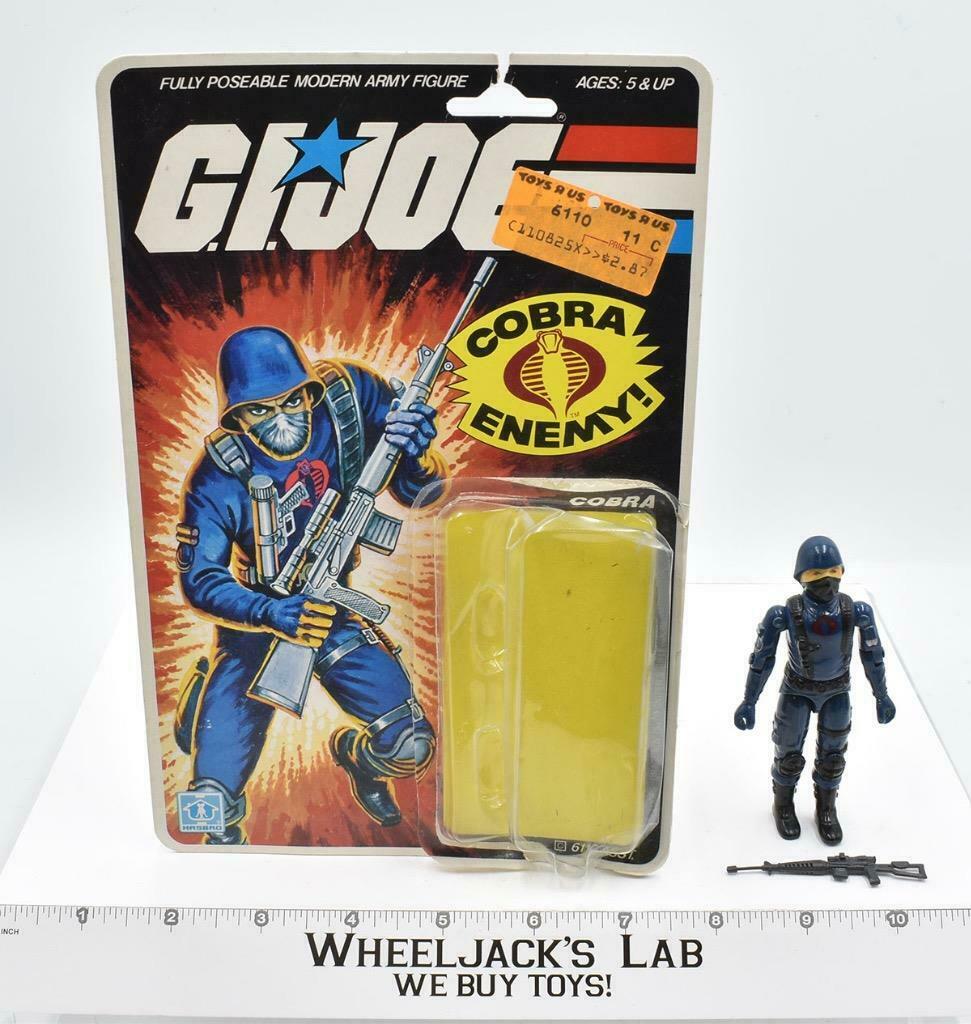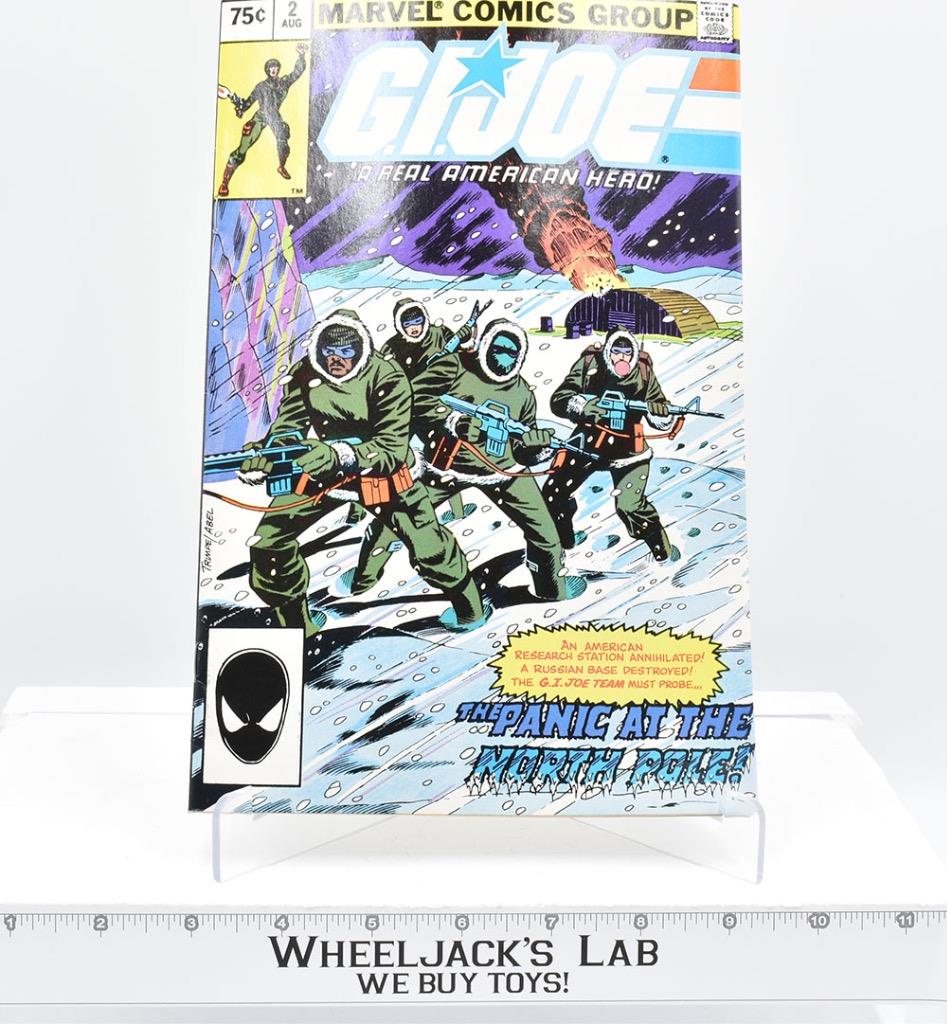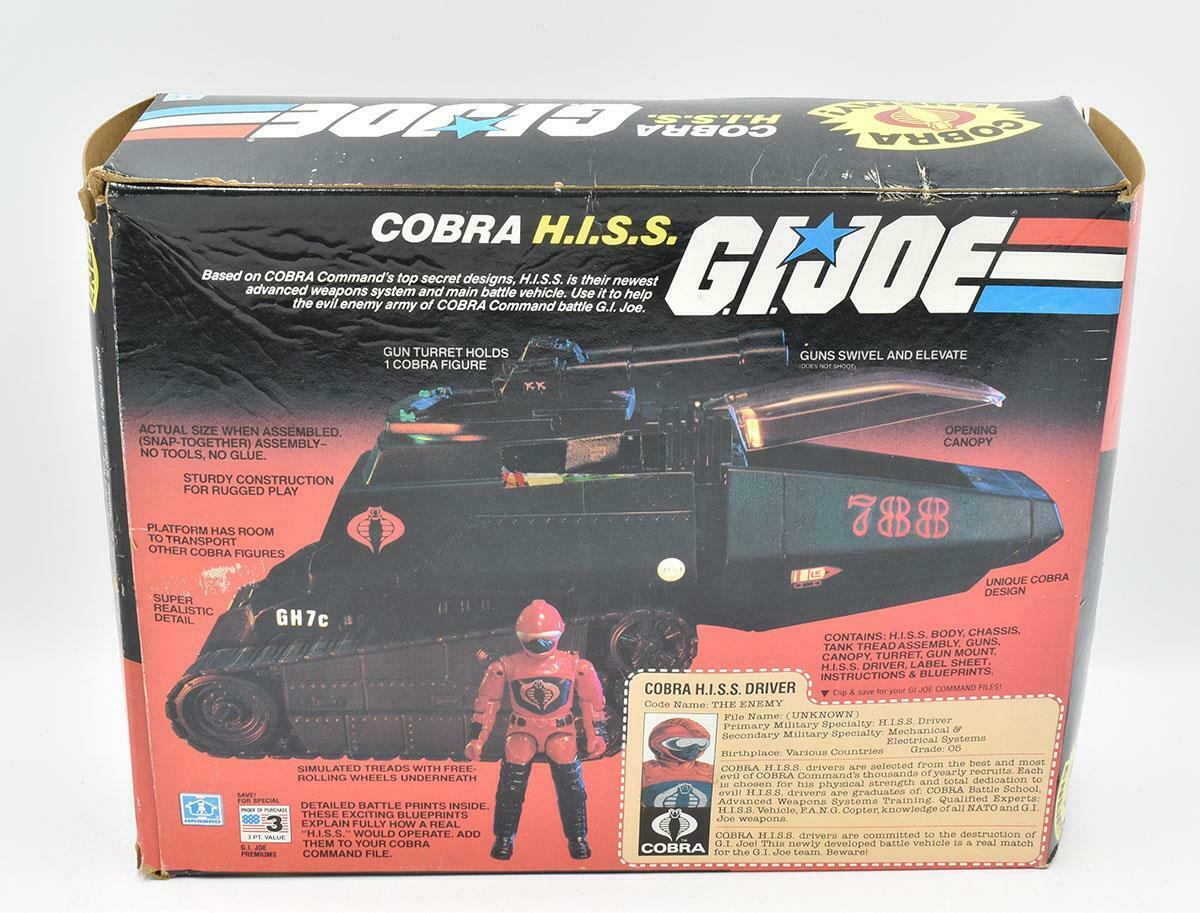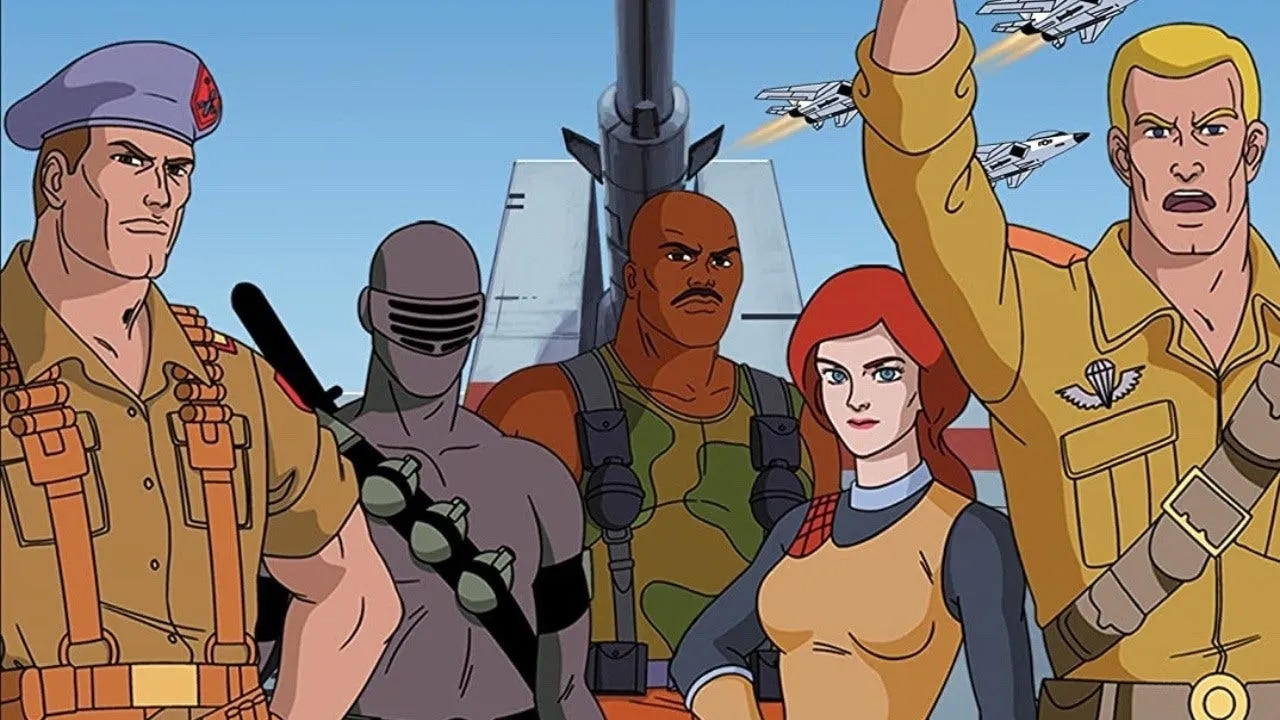Moments in Toy History: Revisioning A Real American Hero, G.I. Joe
The story of G.I. Joe began in 1963 when Stanley Winston from Manhattan created his prototype for a military-themed action figure. From the moment that Donald Levine, an executive at Hasbro, set eyes on the prototype, he knew he saw a hit. Thus, Hasbro became the home of G.I. Joe for only the sum of $100,000. Only a few years later, in 1967, G.I. Joe officially hit store shelves to become one of Hasbro’s tentpole toy lines.
While G.I. Joe made a strong impression when it debuted, the excitement for the military forces dwindled in the 1970s. As the Vietnam War waged, the public soured at the thought of idealizing military life. Likewise, the G.I. Joe toy sales sank to new lows. Even though Hasbro attempted to rebrand G.I. Joe, even creating an Adventure Team subline, the sales steadily dropped. Thus, Hasbro halted production of G.I. Joe altogether in 1978.
The story of the Joes did not end there, for a new dawn came in the 1980s. After Kenner took the world by surprise with Star Wars, most toy companies dreamed of recreating their success. Hasbro was no different. More importantly, there was a very persistent man in Hasbro who knew that G.I. Joe had more life in it.
The Man Who Never Gave Up

G.I. Joe as we know it today would not be around without the efforts of one man in Hasbro: Bob Prupis. He rose through the ranks to become the Head of Boys’ Toys for the company in 1979. As the man settled down in his new position, he formed a dream.
Even though G.I. Joe had left the market only a few years before the 80s began, he fully believed that the line could make a full comeback. It may have even been capable of exceeding the heights it reached in the 60s. He honestly believed that the American people were ready to celebrate the armed forces once more. So, he detailed a secret plan to get the line back on the market.
Unfortunately, his first few proposals failed to take off. For the most part, the rest of Hasbro had no faith in his vision, especially if they would revive the 12-inch-tall figures again. With the price of oil and plastics rising, Prupis needed to excite the rest of Hasbro’s execs with his plans. A simple return of the toys did not excite them enough to overlook the price.
Eventually, Stephen Hassenfield, the President of Hasbro at the time, decided that he was tired of hearing about G.I. Joe. He gave Prupis one final chance to impress him and the other execs. If he failed to create an exciting presentation, Prupis was to drop the idea altogether.
2 Weeks to Become A Real American Hero

With only two weeks to create a presentation that would excite Stephen Hassenfield and the other executives, Bob Prupis knew that he needed help from the best. So, he formed a team filled with his greatest men: Kirk Bozigian, Rod Rudat, and Greg Bernstein. Bob Prupis understood that they needed to take notes from Kenner’s Star Wars, scaling down the toys to reduce costs and fit with the modern view of action figures. However, he wasn’t certain how else to spruce up the project.
Kirk Bozigian worked in Hasbro’s marketing department, though he joined Hasbro as a product manager. He understood that a toy line needed more than a great toy to make a splash, especially in the 80s. So, he helped the rest of the team understand that they needed multimedia support to get G.I. Joe off the ground. Luckily, he had the right company in mind: Marvel.
To enlist the help of Marvel, two members from Hasbro’s partner company, Griffin-Bascal Advertising, made the move to contact the comics titan. Once Joe Bascal and Tim Griffin met up with Marvel, they made a strong push to support G.I. Joe. They proposed that Hasbro would spend millions to advertise the comics on television, which would also bypass advertising regulations. In turn, Marvel explained to Hasbro that they needed a compelling villainous force.
Marvel Built the World of G.I. Joe

With Marvel signed onto the project, Jim Shooter, the editor-in-chief, oversaw the creation of the new G.I. Joe story. He quickly realized that the Joes needed to be an anti-terrorist group, so the toys and comics would have no tie to any given war. He then assigned Larry Hama to write the story. Since Larry Hama had a military background and had written for Fury Force, Jim Shooter felt that he was the right man for the job. He also assigned Archie Goodwin as an additional writer and Tom DeFalco as the main editor.
Larry Hama quickly realized that the Joes could not exist without some adversary to fight. Luckily, Archie Goodwin made his mark on the G.I. Joe brand by coining the name Cobra to the terrorist group that threatened the world.
Overall, Larry Hama became the driving force behind the G.I. Joes and the new story. He drafted several index cards that detailed the various characters and vehicles that would appear in the comics. These same cards became the basis for the “file cards” that each action figure came with. About the only thing that Larry Hama did not create was the catchphrase, “Yo Joe”. Instead, that stemmed from the cartoon series that Sunbow Products worked on.
Marvel also pushed Hasbro to allow them to create female characters for the comics. Even though Hasbro believed that female characters would not sell, they were convinced to add Scarlet to the cast.
A Real American Hero is Reborn

Thanks to the combined efforts of his team at Hasbro and Marvel’s team, Bob Prupis was able to successfully wow the rest of the executives. His plan to support G.I. Joe with a strong narrative thanks to Marvel proved to be the magic formula. Thus, the Joes were approved to return to store shelves.
G.I. Joe made its successful return to the toy aisle in 1982, quickly becoming one of the best-selling toy lines from Hasbro. Overall, this new toy line produced over 500 figures with hundreds of vehicles, with the greatest push occurring between 1982 and 1994. However, one last part of their multi-media strategy needed to make an appearance.
Sunbow Teaches that Knowing Is Half the Battle

As regulations loosened during the 1980s, many toy companies rushed in to create the longest commercials possible: full-syndicated cartoon series. G.I. Joe was no exception to this rule. Not long after the new toys launched, Hasbro pushed Marvel Productions to produce an animated series alongside their Sunbow Productions.
This cartoon series introduced fans to two aspects that defined the series for years to come. First, writer Rod Friedman coined the show’s catchphrase, “Yo, Joe”. However, his original version of this exclamation was “Ho, Joe”. Luckily, the voice director, Wally Burr, noticed that the phrase was not strong enough, so he modified it to the “Yo, Joe” we know today.
While cartoons could help advertise toy lines in the 1980s, there still was one regulation that they had to meet. They were expected to include some educational content to appease the watch groups around the nation. So, the production set out to create a series of PSAs to attach to the end of each episode.
With the help of Harvard’s School of Education and Human Development’s Dr. Robert Selman, the team came up with multiple educational shorts for the series. These segments helped kids learn that “Knowing was half the battle” as the characters gave children life advice.
The series began as a tremendous success when it debuted in 1983. However, it quickly ran into problems as Marvel Productions spent over its budget. Even though the series attempted to stay aloft with a feature-length film, it ended in 1986. Sadly, the mismanaged expenses were a death knell for the series. However, it would not be the last time that G.I. Joe appeared on television. Since the 80s, the Joes have appeared in 5 additional cartoons.
Fans Still Fondly Remember The Real American Hero
Even though the toy line from the 80s is long gone, fans still love to remember their favorite characters. Due to their devotion, G.I. Joe has returned to toy shelves multiple times over the decades. Recently, Hasbro has released modern action figures that faithfully recreated the Real American Hero characters with modern improvements.
Moreover, fans that grew up with the toy line love to trade and collect their favorite toys from their childhood. There are even many who maintained the toys from their childhood. Thanks to these fans, the toys from the past are still remembered and valuable today.
Do you have old and used G.I. Joe toys?

If you have a collection of old and used toys, you can turn those toys into cash. There is no reason to let those old toys collect dust. Contact us today to sell your G.I. Joe toy collection.
Our professional, friendly, and expert staff have decades of experience as collectible toy buyers. If you are ready to sell your collection today, fill out the form below or call us at 888-946-2895.
About the Author
Chris Ingledue is the founder and owner of Wheeljack’s Lab pop Culture and Toy Shop. His vision has always been to reunite customers with their favorite childhood toys and pop culture, triggering fond memories, and reigniting their imaginations. Every day he works in the “lab” where it’s Christmas 365 days a year; scouring the internet – like we did the Sears Catalog of yesteryear – for the next great treasure, awaiting the arrival of the postman as if he was Santa Claus himself and helping collectors worldwide with their own versions of Christmas. For Chris, every day as a vintage toy buyer is an absolute joy!